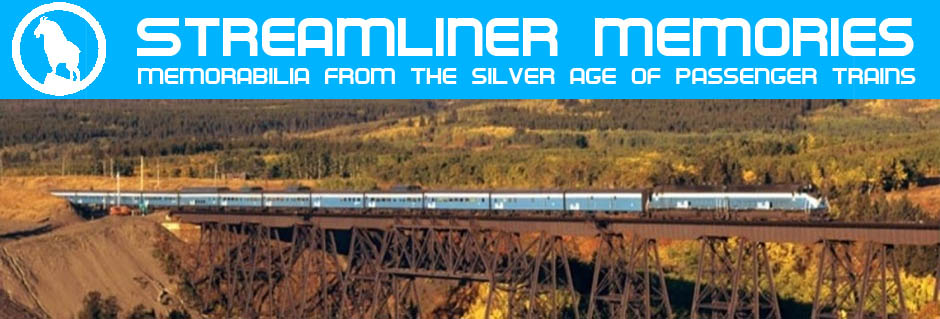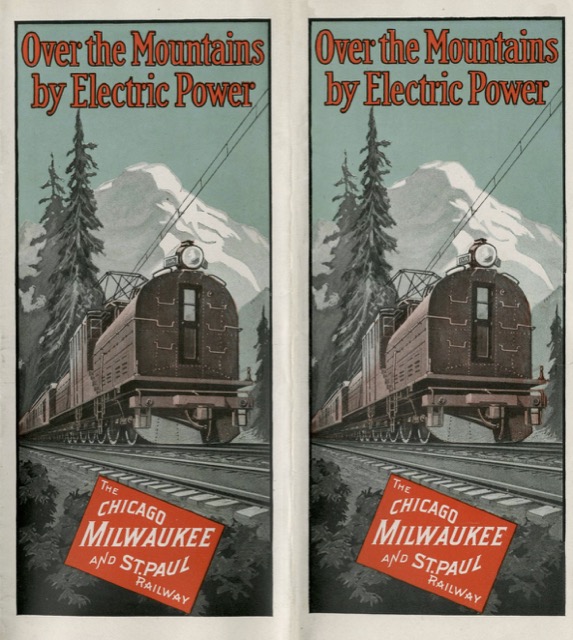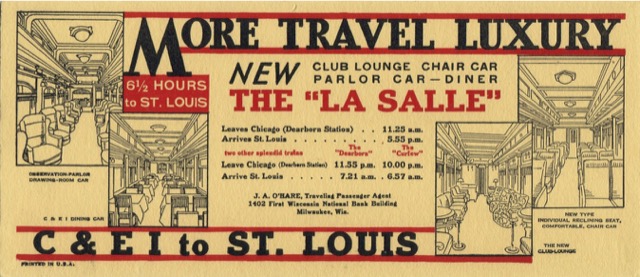This 24-page booklet has 22 pages of information and pictures of the Golden Gate Exposition and two pages of information and pictures of Milwaukee Road trains. I’ve seen almost identical booklets, distinguished only by the railroad name at the bottom of the back cover (which is the cover shown here) and, no doubt, different text and photos on two interior pages, for Canadian National, Rock Island, and Union Pacific railroads, none of which came much closer to San Francisco than the Milwaukee Road. No doubt many others took advantage of this brochure which must have been designed and issued by the expo itself.
 Click image to download a 15.4-MB PDF of this booklet.
Click image to download a 15.4-MB PDF of this booklet.
The booklet has plenty of drawings and several color photos and illustrations of California and the fair. A full-color, centerfold map suggests that most of Contra Costa, Marin, and San Mateo counties remained undeveloped. (Actually, most of them remain undeveloped today thanks to urban-growth boundaries, but most of the parts that are developed today remained undeveloped in 1939.) Continue reading









